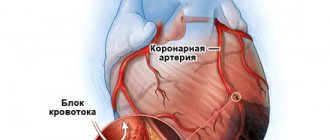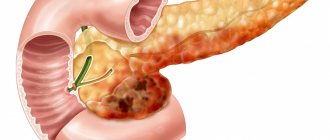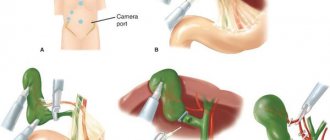Mountain sickness is a common occurrence during mountain hiking and climbing . In the Himalayas, where 2,500 meters above sea level is the usual altitude for Nepalese villages and trekking routes are even higher, the likelihood of suffering from altitude sickness is high. How to avoid altitude sickness?
What are the signs of altitude sickness?
The main symptoms of mountain sickness include: increased heart rate, shortness of breath, headache, dizziness, rapid pulse, tinnitus, muscle weakness, cardiac dysfunction. As the tourist rises to altitude, his visual acuity decreases and the correctness of distance determination is impaired. Dry mountain air, loss of fluid due to increased ventilation of the lungs and sweating lead to dehydration of the body. Under normal conditions, a person loses about 3 liters of fluid, and when trekking in Nepal, moisture loss reaches 8-10 liters per day, depending on the altitude gained and the degree of physical activity.
Insufficient oxygen saturation of the blood leads to oxygen starvation of the brain cells most in need of oxygen, causing mental disorders. In addition, changes in the body's thermoregulation and a decrease in pain sensitivity are observed. In this regard, if you get mountain sickness, there is a risk of quickly getting frostbite or pneumonia.
Mountain sickness during mountain hiking and climbing can manifest itself both suddenly - with excessive overexertion in conditions of oxygen deficiency, and gradually. It can be recognized by the first signs - fatigue, drowsiness, dizziness, poor appetite. If the climb continues, the breathing rhythm is disrupted, nausea and vomiting occur, chills and fever appear. In addition, cyanosis develops - the pallor of the skin, especially the face, increases, and the lips turn blue. In the absence of proper acclimatization, headaches and drowsiness continue to increase. Shortness of breath is pronounced, there may be bleeding from the nose and lungs. A dry throat causes a cough and a constant desire to drink.
Mental disorders are not uncommon in high altitudes. With the development of mountain sickness, even slight mental stress causes severe headaches. The blood flow to the brain is disrupted, so attention and memory volume sharply decrease, and peculiar character changes are observed. For some, these changes are expressed in indifference, lethargy, weakness of will, and for others - in agitation. In severe cases, the period of excitement (euphoria) is replaced by a sharp depression of the psyche and subsequently turns into a general diffuse inhibition. Along with this, the mechanism of self-control changes and the risk of making inadequate or completely absurd decisions increases. At high altitudes, climbers may experience hallucinations. Because of this, they see some visions. They hear voices and start talking to themselves. In rare cases, loss of consciousness may occur. Sleep becomes restless, people have difficulty falling asleep and often wake up from suffocation.
Further ascent to altitude by participants with symptoms of altitude sickness can lead to the development of serious pathologies. Including focal lesions of the heart, liver, acute renal failure, acute pneumonia, developing into pulmonary edema, as well as hemorrhage in the brain (stroke) and cerebral edema.
Signs of high altitude pulmonary edema
The first signs of pulmonary edema are:
- Weakness, headache, rapid breathing.
- Later, pallor, blue lips and nails, restlessness, and wheezing are heard during breathing.
- A pinkish foam may be released from the mouth, which is foamed plasma containing red blood cells.
- If there is no treatment, the terminal phase of pulmonary edema occurs. The pressure drops, breathing becomes shallow and irregular.
The cause of death due to pulmonary edema is asphyxia.
What are the main causes of altitude sickness?
As you move away from the earth's surface, the density of the air decreases. This is due to the fact that the pressure in the upper atmosphere is lower than that of the ground. The rarefied zone contains much fewer molecules of gases that make up the air, including oxygen molecules. Therefore, in the highlands, any person who inhales the usual volume of air receives an insufficient amount of oxygen. For example, while trekking in Nepal at 5,500 meters, a person inhales only half the amount of oxygen that he is accustomed to at sea level. Hypoxia (oxygen starvation), along with heavy physical activity, extreme climatic conditions and high levels of radiation, often leads to the development of a pathological process called “mountain sickness.”
The mechanism of development of this disease is as follows. Lack of oxygen in the human body leads to a decrease in oxygen tension in arterial blood plasma and insufficient saturation of hemoglobin with oxygen. In response to suffocation, a person begins to breathe rapidly. But with increased breathing, hyperventilation of the lungs occurs, which is accompanied by a powerful removal of carbon dioxide from the body. Hypocapnia - a lack of carbon dioxide in the blood, in turn, leads to a deterioration in blood supply to the brain and heart, the accumulation of alkaline substances, electrolyte imbalance and redistribution of water between the blood and tissues. These changes are the main cause of altitude sickness.
To maintain vital functions, the human body includes adaptation mechanisms:
- increases the frequency and depth of breathing to speed up gas exchange in the lungs;
- increases pressure and redistributes blood flow, directing it primarily to the blood supply to the heart and brain;
- increases the oxygen capacity of the blood due to the increased release of the main oxygen carriers - red blood cells from the spleen and bone marrow;
- Glycolysis (anaerobic pathway for energy production) is stimulated.
The greater the height of the rise, the more decisive measures the body takes to combat hypoxia, the more time it requires for this. However, the compensatory functions of the body are not unlimited. Excess red blood cells increase blood viscosity and impede blood flow, which can cause cardiac dysfunction, strokes and heart attacks. With prolonged stay at extremely high altitudes, oxygen starvation leads to an increase in the permeability of the cell membrane and vascular walls. Increased blood pressure, designed to speed up the transfer of oxygen, leads to fluid leakage through the wall of blood vessels and causes swelling of various tissues. The greatest harm to the body comes from edema of the brain and lungs, which in the mountains and far from civilization leads to death.
INDICATIONS FOR USE
- to improve performance in extreme and unfavorable conditions accompanied by a lack of oxygen (high mountains, Arctic conditions, underwater work, etc.);
- mental and physical stress, operator activity and other intense stress, accompanied by chronic fatigue and fatigue;
- in complex therapy of severe traumatic injuries, blood loss, extensive surgical interventions, respiratory diseases (bronchial asthma, pneumonia, obstructive bronchitis);
- as part of complex therapy for stable angina (prevention of angina attacks), arterial hypertension, chronic heart failure of NYHA class I and II.
At what altitude does altitude sickness occur when hiking and climbing?
Everyone who is planning to go on a high-altitude trek to the base camp of Everest or climb Elbrus thinks about at what altitude the intoxicating “miner” can catch him.
The first attempts to explain the painful sensations of a person in the mountains were made by the French physiologist Paul Ber, who published his monograph in 1875, in which he described the influence of barometric air pressure on the state of the body. Since then, scientists from different countries have been able to substantiate the reasons why altitude sickness occurs during mountain hiking and climbing. Moreover, they classified altitude levels according to the degree of comfort for a healthy person.
According to their findings, mountain zones can be divided according to the following scheme:
- up to 1000 m – low mountain zone, where the trekker does not lack oxygen even during intense work;
- 1000 - 3000 m is a mid-mountain zone, which is characterized by hidden hypoxia - the lack of oxygen there is felt only during intense muscular activity, and under conditions of moderate physical activity the human body easily compensates for oxygen deficiency;
- from 3000 – a high-altitude zone where the human body can undergo changes caused by oxygen starvation.
The highland zone has its own division and is divided into the following zones:
- “full acclimatization” - from 3000 to 5000 m, where, thanks to the mobilization of all compensatory reactions, the body copes with hypoxia, but for this it will require some time for acclimatization;
- “incomplete acclimatization” – from 5000 to 6000 m, where the human body cannot fully counteract the development of hypoxia; with a long stay in this zone, he develops fatigue, loses weight, and muscle tissue atrophies;
- “partial adaptation” - from 6000 to 8000 m, where the body cannot provide the most important organs with the necessary amount of oxygen, therefore, within 6-7 days of staying at this altitude, their activity begins to be disrupted;
- lethal zone (death zone) - above 8000 m, where a person loses resistance to the effects of altitude; under such conditions, the body’s internal reserves are depleted within 2-3 days.
In 1925, the famous German physiologist N. Zuntz expressed interesting thoughts in his scientific work that in different geographical areas the same symptoms of mountain sickness appear at different altitudes. Subsequently, this opinion was confirmed by research. For example, when hiking in Kamchatka, altitude sickness appears already at an altitude of 1500 m, in the Alps - at 2500 m, in hiking in the Caucasus and hiking in Altai - at 3000 m. However, when hiking in the Tien Shan or hiking in the Fan Mountains in the Pamir -Alai you can climb to a height of 3500-4500 m without experiencing discomfort in your well-being. In Nepal, during a certain season, you can easily trek around Annapurna and conquer the Thorong-La pass at a height of 5416 m. Moreover, in different mountain regions, the increase in hypoxia with increasing altitude also occurs differently.
Although scientists are still continuing to research the causes and mechanisms of altitude sickness, it is already clear that it cannot be associated only with oxygen deficiency. During high-mountain trekking in Nepal or climbing Kazbek, a tourist spends a lot of energy adapting the body to physical activity, strong winds, increased solar radiation, and temperature changes. The most important factor influencing the development of mountain sickness is climatic conditions. For example, researchers have noticed that dry air, which is characteristic of a continental climate, is much easier to breathe than more humid air, and therefore mountain sickness manifests itself in such a climate at high altitudes. This is confirmed by the fact that in the Himalayas, with a sharply continental climate, a climber begins to experience pain due to a lack of oxygen only at high altitudes (4000-5000 m), while in Kamchatka, where a humid maritime climate prevails, hypoxia occurs already in the mid-mountain zone.
In the 30s of the 20th century, some scientists indicated a connection between mountain sickness and the height of the snow or firn line. They noticed that climbers most often begin to feel pain in their bodies when they reach areas where large areas are covered with snow and ice. For example, the average height of the firn line in different mountain regions has the following values: in Scandinavia - 1500 m, in the Alps - 2900 m, on the Main Caucasus Range - 3400 m, in Altai - 2900 m, in the Himalayas - 5000 m. Climatic factors influencing the manifestation of altitude sickness and the formation of the firn line have similarities - humidity, air temperature, intensity of solar radiation. It is likely that a sharp decrease in temperature and increased radiation as a result of reflection from snow are the catalysts that, together with hypoxia, lead to the rapid manifestation of mountain sickness.
Based on experimental data, maps of high mountain areas have now been developed, which contain information about the initial altitude of manifestation of mountain sickness. Acclimatization levels of hypoxia are usually indicated using isolines.
What human factors influence the development of altitude sickness?
Individual resistance of people to oxygen deficiency
While hiking in the Himalayas, you will notice that even in the highest mountains there are people constantly living. Having once settled in these areas, the highlanders at the genetic level developed resistance to hypoxia. For example, they have dark skin that is less sensitive to the burning rays of the sun. They have increased lung capacity. Thanks to the presence of a special EPAS1 gene, in residents of high mountains the level of red blood cells in their blood does not increase, and the blood remains liquid. Moreover, their body produces more nitric oxide, which allows the blood vessels not to narrow and maintain an increased blood flow rate. This physiology allows mountain dwellers to obtain more oxygen from rarefied air than inhabitants of the plains. In contrast, ordinary trekkers need time for their bodies to adapt to the mountain air.
In this regard, it is important to note that some people genetically do not have the ability to adapt to staying at an altitude of more than 2500 m. Their bodies do not have genes responsible for the synthesis of respiratory enzymes, without which oxygen cannot be transported to the brain. And even with effective external respiration, tissue respiration does not occur in the body. People who go hiking in the mountains for the first time and do not know their ability to adapt to altitude are considered a high-risk group. Due to impaired brain function, they can get serious complications in the body.
Gender and age
According to the observations of mountain guides, trekking at high altitudes is easier for women and older people. With a lack of oxygen, it is most difficult for people who are prone to pressure surges and young men of large build with bulky muscle mass. The history of climbing knows cases when trained athletes are forced to return to camp without completing the climb, and a fifty-year-old lean instructor safely brings the girls to the top.
Physical condition, level of training
Good physical fitness, and especially developed lungs, significantly increases resistance to stress at altitude, although it does not protect against the development of altitude sickness. The level of fitness will be much higher if, a few months before the start of trekking, you start doing fitness, doing multi-kilometer runs, running up the stairs of a multi-storey building, cross-country skiing in winter, and cycling in summer. At the same time, training and loads should be reasonable. You shouldn't exhaust yourself before going to the mountains.
High Altitude Experience
Upon returning from the mountains, acclimatization to altitude disappears as quickly as it appeared. The body does not need an excess of oxygen and begins to restore its previous mode of operation. This explains the poor health of climbers in the first days of life after descending from a great height. Reacclimatization will take about a week. During this time, hemoglobin will drop to normal levels, and your health will improve. Therefore, it is incorrect to say that the human body can remain resistant to hypoxia for a long time. In reality, we are talking about gaining high-altitude experience, which is not the same thing.
According to scientists, high-altitude experience has two components: subconscious and conscious. The subconscious component is the body’s memory of the order of triggering adaptive reactions and correct behavior in conditions of oxygen deficiency. Thanks to it, a person acclimatizes to altitude faster and more efficiently. The conscious component represents the knowledge acquired by a person about the reaction of his body to hypoxia. Knowing about the individual symptoms that precede an exacerbation of mountain sickness, a person acclimatizes more gently and does not allow overloads when climbing to altitude.
What is mountain altitude sickness?
In recent years, the popularity of mountain tourism has increased significantly. People who go to the mountains are not always aware of the dangers that may await them during an unforgettable adventure. Tourists go to conquer the peaks without undergoing appropriate training and without the necessary experience. However, being at an altitude of 2500 meters can provoke the development of altitude sickness, accompanied by edema of the brain and lungs, as well as other pathological processes that can cause death.
Acute mountain sickness is a pathological condition provoked by a decrease in partial oxygen in the inhaled air, as well as fatigue, low air temperature and dehydration of the body. Almost the only (and most effective) first aid method in this case is a gradual decrease in height. If symptoms of mountain sickness appear, further ascent, especially a sharp one, is impossible: this can cause death!
Altitude sickness while hiking and climbing - how to prevent it?
In order to weaken the effect of hypoxia, several effective methods have been developed, among which preparation for climbing, acclimatization, and proper nutrition deserve special attention.
Do you need to prepare for the climb?
To avoid mountain sickness while hiking and climbing, careful preparation is needed. During the two to three weeks preceding the ascent, training should begin. Adaptation to altitude by conquering low altitudes, spending a short time at these altitudes and quickly descending, as well as repeated alternation of ascents and descents, showed good effectiveness. Long-term acclimatization training accustoms human organs and tissues to work in conditions of oxygen deficiency.
Why is acclimatization needed?
Mountain sickness during mountain hiking and climbing, affecting the climber’s brain, deprives him of the ability to think critically about himself. When mild hypoxic euphoria sets in, everything seems accessible to a person. Tourists often try to organize competitions in rapid ascent. Such actions are extremely dangerous because they instantly disrupt adaptive mechanisms. As a result of rapid ascent, there is a high probability of hypoxic depression of consciousness, depression, and cardiovascular failure. On the contrary, proper acclimatization has a positive effect on the body’s adaptation to oxygen deficiency. With properly planned adaptation to mountain hiking, the body rearranges the order of redox processes and changes the composition of the blood, which allows it to better absorb oxygen and spend energy more economically.
What is the best method for adapting to altitude?
It is very important not to take a quick start in the first stages of trekking in the mountains. A good result was shown by the “run ahead” tactic, when the group stops for the night at an altitude that is lower than the highest point reached during the day. In Western Europe this method is called the "saw tooth" method. Despite the fact that “stepped” acclimatization requires a long period of time, it is the most effective and reliable method that makes it easier for the body to adapt to being at altitude. If a climber quickly rises from sea level to the top of Everest, he will die. However, there are already known cases when people conquered the highest peak without additional oxygen, spending a sufficient amount of time on the ascent - about 90 days.
The essence of the “saw teeth” method is to perform cycles: every day, rise and rest as high as possible, and then descend and spend the night as low as possible. For example, having gained 1000 m in a day, you should spend the night 400 m lower. With each subsequent ascent, the group reaches greater heights and reliably consolidates the experience of the previous day. It is very important to get a good rest at night. At this time, at altitude, a person is most vulnerable: he loses mobilization from the nervous system and tone, which is maintained during wakefulness by volitional efforts. At the same time, control of his condition by other participants in the ascent ceases. It is at night that deaths occur among those whose bodies are exposed to hypoxia. At the same time, a properly organized overnight stay at altitude makes it possible to adapt to this altitude to the greatest extent.
When choosing your actions, you should be guided by your heart rate - this is a pretty good indicator. The evening pulse of a tourist can be high and, in mild forms of mountain sickness, exceed 100 beats per minute. However, the morning contraction rate should drop to 80-90 beats per minute. If a person claims that his morning heart rate exceeds 105 beats per minute, then the group leader must escort him down, since he has not mastered the altitude during the night. Further ascent at such a morning pulse often leads to severe mountain sickness. At the same time, the group is delayed due to the fact that it has to lower the victim from an even greater height.
During the day's marches the group must move at the same pace. So that breathing is calm, uniform and does not get confused. Nepalese guides recommend moving in small steps at the speed of a yak - slowly. You can't do fast runs in the mountains, it's dangerous! At the same time, there is no need to be lazy during acclimatization. Continuous movement and moderate physical activity maintains blood circulation and makes it easier to cope with altitude sickness.
The altitude at which acclimatization starts is of great importance. If the group initially walks quickly and only at around 4000 m begins to move according to the rules of acclimatization, this can lead to wear and tear on the body and poor adaptation to high altitudes. It is not recommended to skip the acclimatization stage at an altitude of 3200-3500 m.
When trekking in the mountains, medical self-control and control over your condition is very important. Participants must periodically measure their pulse, blood pressure, and blood oxygen levels using a pulse oximeter.
What are the basic principles of acclimatization to altitude?
Basic principles of acclimatization:
- within the limits of reaching an altitude of 3000 m, increase the altitude of the overnight stay by 500-600 m every day.
- When climbing more than 3000 m, take a day every 1000 m.
- Do not travel by transport immediately to an altitude of more than 3000 m.
- remember that the rate of acclimatization varies significantly among different people;
- “climb high, sleep low”;
- in case of delivery by transport to a high altitude, do acclimatization for 24 hours;
- If the symptoms of altitude sickness intensify, the ascent should be stopped and the descent should begin.
The problems associated with acclimatization do not end after conquering the heights and descending into the valley. At this moment, the processes of adaptation to low altitudes begin to take effect in climbers. High partial pressure of oxygen impedes tissue repair processes. Alcohol, which climbers drink to celebrate their victory, can cause enormous harm at this moment. Alcohol in large doses sharply inhibits the function of brain neurons and tissue respiration enzymes. History remembers when experienced climbers died already in Kathmandu with an abundance of oxygen and normal climatic conditions. That is why descent from high altitude should also be done gradually.
To make it easier to stay at extreme altitudes, climbers use additional oxygen, which they carry with them in cylinders. This practice makes it much easier for them to stay in hypoxic conditions, but on the other hand, it is dangerous. At a certain point, oxygen can turn from a friend into an enemy and cause some, including fatal, complications. Due to the very low temperature at the outlet of the reducer, it can cause bronchospasm and pulmonary edema. It can cause dysregulation in the brain’s perception of the situation and poor decision-making. Doctors explain this by human adaptation to inhaling air as an oxygen-nitrogen mixture, and not to aspiration of pure oxygen. In addition, if the oxygen suddenly runs out, the climber risks instantly finding himself in a vacuum (like a depressurized airplane) with all the ensuing consequences of oxygen starvation on the brain, lungs, heart, and eyes. The same climber who climbs to the top without oxygen and can adapt to the altitude does not expose himself to such risks.
Every year, up to ten people die on the route to Everest Base Camp because they did not heed the advice and continued to move forward, despite their deteriorating health. Don’t repeat their mistakes, follow the rules of acclimatization, and only after your condition improves, feel free to move on!
High altitude cerebral edema
Cerebral edema is an excessive accumulation of fluid in the brain tissue, leading to increased intracranial pressure. Brain edema manifests itself as a disturbance in the patient's condition, headache, and disturbances of consciousness (up to coma). In the absence of timely assistance, cerebral edema leads to death.
High-altitude cerebral edema most often develops at night, which is associated with the horizontal position of the human body and increased venous return to the upper half of the body. An additional contribution is made by the fact that at night a person breathes less often and less deeply, which increases hypoxia.
High-altitude cerebral edema is an indication for immediate oxygen therapy and the use of medications if a physician is nearby. At the same time, it is necessary to begin resetting the altitude. Moreover, descent is required in all cases of suspected cerebral edema, as well as if the symptoms of mountain sickness do not stop. Further ascent is impossible.
If you suspect the development of cerebral edema, the victim should under no circumstances remain in a horizontal position for a long time! It is important to remember that even if the symptoms of incipient cerebral edema are recorded at night, descent must begin immediately, since by morning the victim’s condition almost always worsens!
What kind of nutrition is needed at altitude?
In the prevention of mountain sickness, a complete and balanced diet is of great importance: varied and satisfying, containing sufficient amounts of proteins, carbohydrates, fats, mineral salts and vitamins. It is recommended to eat hot food rather than dry food. During the entire ascent, there must be hot sweet tea. Alcoholic drinks should be completely excluded from the diet. The statement that alcohol speeds up blood flow and instills vigor is wrong. After drinking alcoholic beverages, temporary excitement occurs, which after some time is replaced by a loss of strength and loss of the ability to pay attention, which is very harmful in high altitude conditions.
At altitudes exceeding 5000 m, the amount of fluid consumed should be at least 4-5 liters per day. This helps eliminate toxins and avoids dehydration. You should also increase the calorie content of food to 5000 kcal per day. If possible, dishes should be “spicy” to increase the secretion of digestive juices. In the process of adaptation to high altitudes, the oxidation of fatty acids becomes more difficult. Because of this, ketones accumulate in the body - under-oxidized products of fat metabolism, which can cause symptoms of “altitude sickness” such as nausea and vomiting.
It is justified to include in the diet a 10% increase in the amount of carbohydrates in the form of sucrose and glucose, since they suppress the formation of ketones and thereby prevent the appearance of unpleasant symptoms of hypoxia. In the process of adaptation to altitude sickness, instant and easily digestible milk proteins are recommended, as well as protein products specially created for this purpose (protein chocolate, protein cookies), freeze-dried meat and fish products. To combat “altitude sickness,” Nepalese advise drinking yogurt, which partially restores the acid-base balance in tissues and improves well-being.
Do you need medications for altitude sickness?
During repeated ascents to high altitudes, the body develops its own adaptive survival mechanisms, and the use of medications in reasonable quantities only accelerates this adaptation.
While trekking in the Himalayas, it is mandatory to take multivitamins (preferably with a complex of microelements). These substances, as catalysts, are part of enzymes and participate in redox processes. Vitamins B, C, PP and folic acid are important, having a pronounced effect on increasing the number of red blood cells and hemoglobin. Along with vitamins, you should take a complex of enzymes that improve digestion and accelerate the process of energy formation: “Pankreotin”, “Mezim”, etc.
The effectiveness of adaptation processes to hypoxia is influenced by eubiotics. These are preparations of beneficial living bacteria, which are extremely necessary for those in conditions of oxygen deficiency. Starting to take Linex, Bifiform or their equivalent two weeks before the ascent, you can restore the microflora and get more oxygen for the body.
There are many good reviews about such a means for accelerating acclimatization as diacarb. It effectively reduces intracranial pressure, but is not recommended for prophylaxis. In addition, tourists who were allergic to sulfa drugs may be allergic to diacarb. Therefore, before using any medications, consult a doctor.
Altitude sickness while hiking and climbing is no joke!
Not every tourist can cope with it easily. We recommend that you go hiking in big mountains and climb only under the guidance of experienced guides! x(x)











